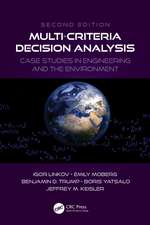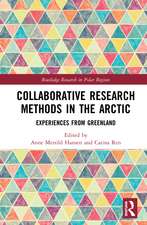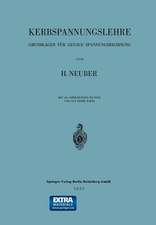The Wadden Sea Ecosystem: Stability Properties and Mechanisms
Editat de Sabine Dittmannen Limba Engleză Paperback – 22 ian 2012
Preț: 641.85 lei
Preț vechi: 755.13 lei
-15% Nou
Puncte Express: 963
Preț estimativ în valută:
122.82€ • 128.49$ • 102.03£
122.82€ • 128.49$ • 102.03£
Carte tipărită la comandă
Livrare economică 02-16 aprilie
Preluare comenzi: 021 569.72.76
Specificații
ISBN-13: 9783642642562
ISBN-10: 364264256X
Pagini: 324
Ilustrații: XII, 307 p.
Dimensiuni: 155 x 235 x 17 mm
Greutate: 0.46 kg
Ediția:Softcover reprint of the original 1st ed. 1999
Editura: Springer Berlin, Heidelberg
Colecția Springer
Locul publicării:Berlin, Heidelberg, Germany
ISBN-10: 364264256X
Pagini: 324
Ilustrații: XII, 307 p.
Dimensiuni: 155 x 235 x 17 mm
Greutate: 0.46 kg
Ediția:Softcover reprint of the original 1st ed. 1999
Editura: Springer Berlin, Heidelberg
Colecția Springer
Locul publicării:Berlin, Heidelberg, Germany
Public țintă
ResearchCuprins
1 Introduction.- 2 ELAWAT: Goals and Conceptual Framework.- 3 Study Area: The Backbarrier Tidal Flats of Spiekeroog.- 3.1 Description of the Spiekeroog Backbarrier System.- 3.2 Meteorological Conditions in the East Frisian Wadden Sea from 1994-1996.- 3.3 Hydrographic Conditions in the Spiekeroog Backbarrier System.- 3.4 Morphology and Sedimentology of the Spiekeroog Backbarrier System.- 3.5 Biofacies in the Spiekeroog Backbarrier Tidal Flats.- 3.6 Ecosystem Engineers: Mytilus edulis and Lanice conchilega.- 4 Statistical Models and Techniques for the Analysis of Conditions of an Ecological System.- 4.1 Introduction.- 4.2 Terminology.- 4.3 Statistical Methods for the Description and Measurement of Stability Properties.- 4.4 Statistics in ELAWAT.- 5 Spatial and Temporal Distribution Patterns and Their Underlying Causes.- 5.1 Distribution of Nutrients, Algae and Zooplankton in the Spiekeroog Backbarrier System.- 5.2 Biogeochemical Processes in Tidal Flat Sediments and Mutual Interactions with Macrobenthos.- 5.3 Settlement, Secondary Dispersal and Turnover Rate of Benthic Macrofauna.- 5.4 Modelling the Spatial and Temporal Distribution of Lanice conchilega.- 5.5 Biotic Interactions in a Lanice conchilega-Dominated Tidal Flat.- 5.6 Size Frequency, Distribution and Colour Variation of Carcinus maenas in the Spiekeroog Backbarrier System.- 6 Recolonization of Tidal Flats After Disturbance.- 6.1 Introduction.- 6.2 Material and Methods.- 6.3 Recolonization After Experimental Disturbances.- 6.4 Recolonization Following the Ice Winter 1995/96.- 6.5 Discussion.- 7 Effects of the Ice Winter 1995/96.- 7.1 Introduction.- 7.2 The “Disturbing” Effects of the Ice Winter 1995/96.- 7.3 The Seasonal Development 1996 (Regeneration).- 7.4 The “Black Area Event” 1996.- 7.5 Comparison ofIce Winter Effects in Different Parts of the Wadden Sea.- 8 Grid-Based Modelling of Macrozoobenthos in the Intertidal of the Wadden Sea: Potentials and Limitations.- 8.1 Introduction.- 8.2 The First Model: A Demonstration.- 8.3 Problems When Applying the Grid-Based Approach in the Wadden Sea.- 8.4 A Grid-Based Approach Tailored to the Wadden Sea: TOPOGRID.- 8.5 Methodological Conclusions.- 8.6 Ecological Conclusions.- 9 Stability Properties in the Wadden Sea.- 9.1 Introduction.- 9.2 The Conceptual Framework: A Glossary.- 9.3 A Canon of Questions.- 9.4 The Abiotic Ingredients of the Wadden Sea.- 9.5 The Biotic Ingredients of the Wadden Sea.- 9.6 Conclusions.- 10 Assessing Stability Properties: How Suitable is this Approach for Ecosystem Research in the Wadden Sea?.- 11 Joint Research Projects: Experiences and Recommendations.- 11.1 Realization of ELAWAT.- 11.2 Problems and Potentials of Joint Projects.- 11.3 Gaps of Knowledge and Research Recommendations.- 11.4 Recommendations for the Realization of Joint Projects.- 12 Protection of Processes in the Wadden Sea.- 12.1 What is Protection of Processes?.- 12.2 Protection of Processes in the Wadden Sea.- 12.3 Arguments from ELAWAT for the Protection of Processes.- 12.4. Outlook.- 13 Summary.
Caracteristici
Summary of an ecosystem analysis Application of multivariate statistics and ecological modelling in marine ecology




























